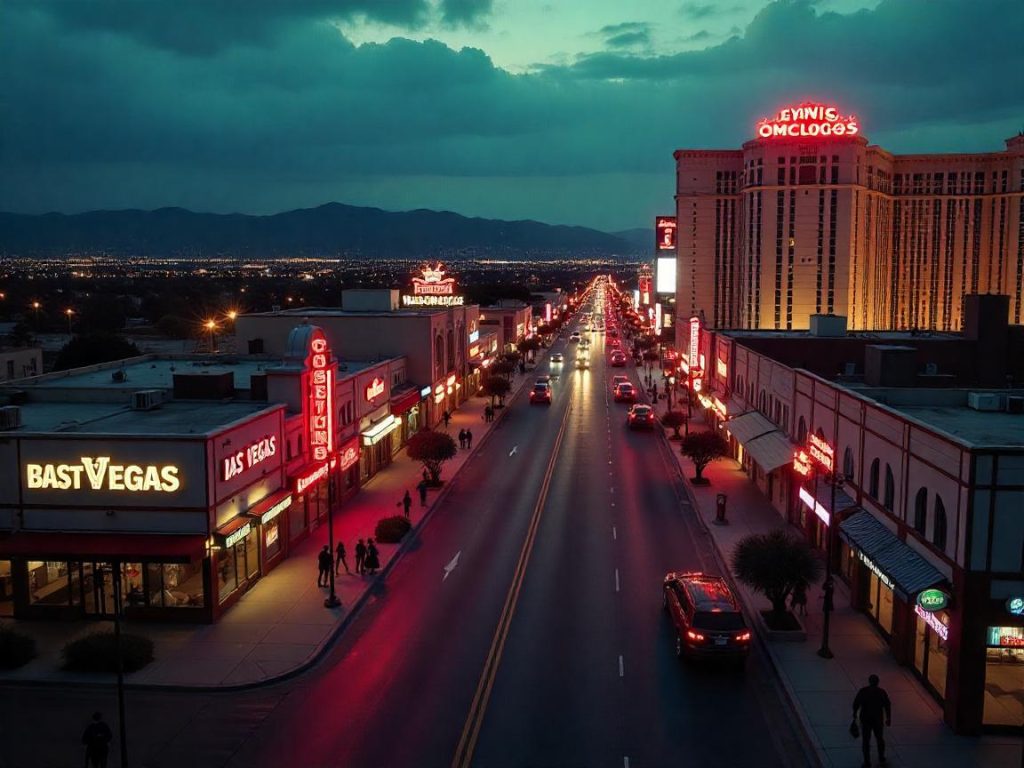Las Vegas Faces Tourism Crisis Alongside Major U.S. Cities
Las Vegas, once a symbol of vibrant American entertainment, is now struggling, joining cities like Los Angeles, San Francisco, Washington D.C., and New York in a downturn. The so-called Trump Slump has escalated from mere speculation to an undeniable crisis. Tourism levels are plummeting, casino revenues are suffering, and job losses in hotels are rising alarmingly.
This downturn represents a significant shift, impacting multiple metropolitan areas simultaneously. Traditionally robust destinations, including Las Vegas and New York, are witnessing a steep decline in visitors and revenue streams, raising serious concerns for the future.
The latest report reveals the severity of the situation. Tourism boards are reacting frantically, with hotels cutting staff and casinos falling silent. This isn’t just a temporary setback; it’s a profound economic reckoning that could have lasting implications for the U.S. travel industry.
Airport Traffic Declines in Casino Cities
The iconic casino cities across America are enduring a challenging period in 2025, as travel and tourism—the lifeblood of these regions—face significant declines. Las Vegas, in particular, is experiencing noticeable drops in foot traffic, with the allure of its bustling casino floors fading due to rising costs and diminished demand.
Other cities, like Atlantic City and Reno, are also grappling with reduced visitor numbers as budget constraints affect spending. The economic challenges are evident, as historic casinos face quieter seasons amid rising inflation.
Impact of Layoffs and Job Losses in Las Vegas
The impact of the tourism slump is particularly pronounced in Las Vegas, where casinos are beginning to lay off workers as visitor numbers dwindle. In April 2025, the city noted a 5.1% drop in tourist visits, a statistic that carries significant weight in an economy reliant on continuous foot traffic.
Some prominent resorts are now reducing their staff, with the number of casino dealers decreasing significantly as demand wanes. Automation solutions are becoming prevalent as casinos seek to operate efficiently, replacing human interaction with technology.
Economic Pressures and Future Uncertainties
The Las Vegas economy faces grim statistics: by the end of 2024, the unemployment rate reached 5.9%, the highest among major U.S. metro areas. Changing consumer behavior—exhibited by reduced spending and a decline in international tourism—adds to the challenges. Hotel occupancy rates are also falling, compounding losses for various sectors that rely heavily on tourism revenue.
As the cost of living rises, wages have stagnated, exacerbating the struggles of those who manage to retain their jobs. The shrinking job market for casino dealers indicates a worrying trend for the future viability of the workforce in Las Vegas.
The Road Ahead for Las Vegas
The current state of Las Vegas tourism highlights a precarious future. Economic pressures, alongside a shift towards automation, could trigger permanent transformations in the landscape of the city. The essence of Las Vegas—its vibrant human experience—is at risk of eroding.
To avert a deeper crisis, swift action is needed from travel authorities, city planners, and hospitality leaders. Investments in tourism infrastructure, fair employment practices, and innovative visitor attractions must be prioritized to ensure the city’s survival and revitalization.



